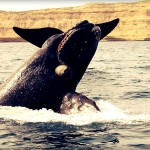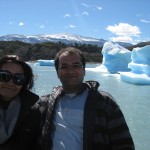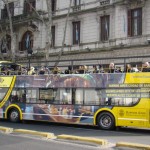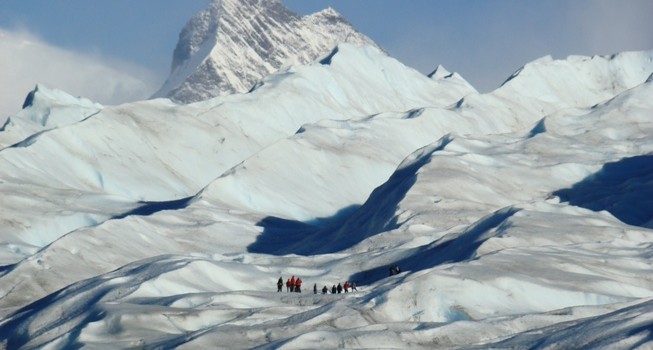
Glaciers & Falls
Argentina is an enormous country, being the 8th largest in the world, with great diversity and stunning landscapes. It takes 6 hours to fly from Buenos Aires to the southernmost city in the world, Ushuaia – which is the capital of the province of Tierra del Fuego in Patagonia. Those who plan to take the Antarctica cruise can do so from Ushuaia- a hub for Antarctic cruises.
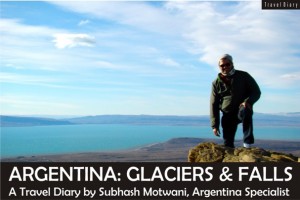
BEYOND BUENOS AIRES
Our next destination after visiting the Paris of the Southern Hemisphere and the capital of Argentina was the city of El Calafate which is half way to Ushuaia. It takes 3 hours by flight to reach El Calafate – the city better known for its spectacular Perito Moreno Glacier, an icefield which was created millions of years ago by a gap formed in the Andes Mountains.
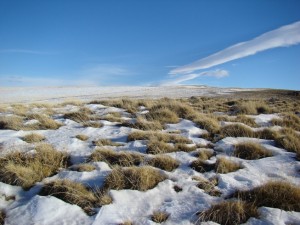
LEGENDS OF PATAGONIA
The region of Patagonia is truly a delight for the adventure seeker and Cerro Castor which is 26 kilometres from Ushuaia is one of the most exclusive ski resorts in Argentina. This region receives the longest snow season in Latin America, reason being that the southern slopes do not receive direct sunlight. As a result skiing in Cerro Castor is a delight as it enjoys the best snow quality that you will find anywhere in the world.
Areas such as Cerro Chapelco, Bayo, Catedral, Las Leñas, Penitentes, Caviahue and La Hoya are places where you can enjoy skiing across the region of Patagonia as well as other snow activities such as snowboarding, snow tubing, husky sledge rides and golf as well. From the green field and the fertile Rio Negro valley to the Andes Mountain range and the arid Patagonia plateau, the last home of the dinosaurs, to foots of hills and volcanoes, sport fishing and stays in estancias or large cattle ranches, one can spend days experiencing different activities in Patagonia and the 3 major cities worth visiting here are Bariloche, El Calafate and Ushuaia amongst others.
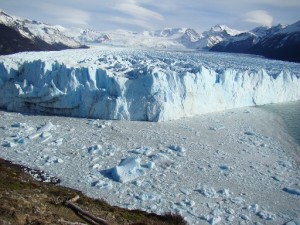
What we were to witness was the Perito Moreno glacier during our short stay in El Calafate, located 80 kilometres from El Calafate and the only glacier which can be viewed from a balcony stretching almost 4 kilometres. As our flight approached El Calafate we noticed the turquoise colour of Lago Argentino – the biggest freshwater lake of Argentina in the Santa Cruz province of Patagonia. It is from this lake that the Argentinian flag derives it colour.
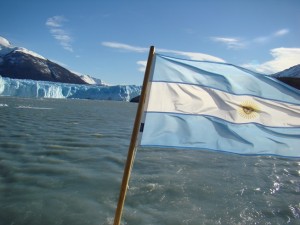
THE PRESIDENTIAL SUITE
Our hotel Los Sauces was located 20 kilometres from the airport in one of the most picturesque locations, P
uertoNataleswhere the Chilean border is 300 kilometres away. So if you don’t have a Chilean visa but still want to get close to Chile, a day trip from El Calafate is a possibility.
The capital of Santa Cruz province is Rio Gallegos, located 300 kilometres from El Calafate. The town of El Calafate, known as the national capital of the glaciers is on the southern end of Lago Argentino (Lake Argentina) and a minimum 3 days stay is recommended to explore the region.
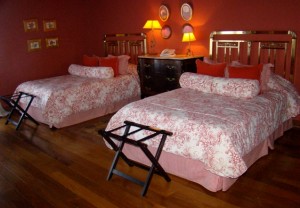
Our short stay at Los Sauces was enjoyable – a world class luxury property with exquisite cuisine and suite style accommodation with wide windows and views of Mount Calafate or Lake Argentina.
La Comarca restaurant serves some fine gourmet cuisine with the suckling Patagonian lamb being an absolute specialty. The Southern Hake (fish) is another speciality.
FOOTHILLS OF THE ANDES
We left for an exciting adventure to Huyliche, a working ranch which raises cattle and criollo horses and is barely 3 kilometres from El Calafate. It was the end of winter with a temperature of around 5˚ C. As we moved up the foothills of the Andean mountains, overlooking valleys, creeks, rivers, we could see some snow across the horizon.
Not only did we get the opportunity to drive on the snow but also experienced a gentle snowstorm.The amazing landscapes and spectacular views made this experience much beyond the exceptional. The region of El Calafate is known for its tourism and meat produce and is one of the few places to experience some unique Farm Tours, sheep shearing, visits to the Eola and Cristina farms which are highly recommended for the discerning travellers. Whether it is horse riding, trekking or even visiting the 3 major glaciers of the region – Upsala, Spegazzini and Perito Moreno, the Santa Cruz province of Patagonia and the city of El Calafate should be right on top of yourmust visit excursions when you visit the South American Continent.
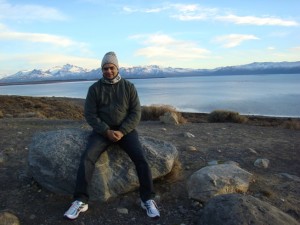
THE GROWING GLACIER
In winter, the sun rises around 0930 hours and we left for the Perito Moreno Glacier at the break of dawn (around 0900 hours) to see both ends of the Glacier which is located 80 kilometres or a 90-minute drive from El Calafate. El Calafate is 400 kilometres away from the Atlantic Ocean and most of the drive is alongside Lago Argentino. The temperature of the water is an average of 3°C all year around.ThePerito Moreno Glacier is part of the southern Patagonian Icefield camp and the average temperature in summer is between 16°C and 18°C. Inspite of such high temperatures in summer, the glacier remains intact all year round.
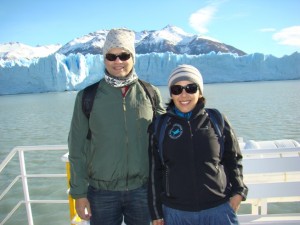
The Glacier can be viewed by boat from the southern side and from the balconies of hotel Los Notros on the northern side, which is in the Los Glaciares National Park.This 250-square kilometre ice formation stretches 30 kilometres in length and is shared with Chile and is the world’s third largest reserve of fresh water. The Perito Moreno Glacier is one of the three Patagonian glaciers which is growing and scientists have to still figure out the mystery behind this.
LUNCH ON ICE
After a good meal, we descended to go to the balcony 4 kilometres long and comprising of 2000 steps. If you are lucky, you could see large chunks of ice rupture in front of your eyes, although the ruptures are not as frequent and at times it takes place once every 4 years. The rupture of the natural dam formed over the L-shaped Lago Argentino is a rare phenomena as the water level rises upto 30 metres and the enormous pressure produced by the height breaks the ice barrier creating this unique rupture cycle. These towering chunks of eroding ice are spectacular.
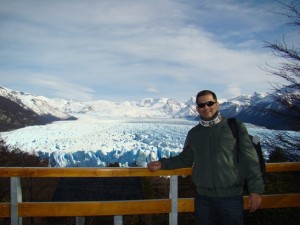
GLACIER WALKS
Another way to view the Glacier is to undertake a Glacier Walk which takes 8 hours, out of which 90 minutes is walk on the actual glacier. The boat trip is definitely a good option for the less adventurous and is an interesting 60 minutes ride taking you very close to the glacier. The glacier stretches 30 kilometres into Chile.
There are as many as 200 glaciers in the area and the major part of the Chilean side of the ice formation is in the sea whereas the Argentinian side is in fresh water. The Perito Moreno glacier moves 1.50 metres every day and is in balance and this is indeed an incredible phenomenon.
The Perito Moreno glacier was named after the explorer scientist Francisco Moreno who incidentally did not see the glacier himself. Adventure seekers can do a glacier walk not only at Perito Moreno but also at El Chalten which belongs to the Fitzroy Mountains and is the trekking capital of Argentina at an altitude of 3400 metres above sea level.
WILDLIFE SPOTTING
El Calafate derived its name from the Calafate plant which is grown on the Patagonian steppes. The Los Glaciares National Park is also home to several birds and quite often you spot the Condor – the largest bird in South America – 3 metres long, 1 metre high and eats only carcasses of animals.Besides Condors, one could also see the Caracara birds and Eagles and as one goes deeper into the National Park, one may be able to spot the Geoffrey’s Cat, South Andean Deer which is nearing extinction and the Mara-Hare or the Patagonian Hare which is found only in Patagonia and nearing extinction as well. This sub-Antarctic forest is also home to lesser Rhea which looks like an Ostrich and the Guanacos from the Llama family though smaller in size than the Llama. The wool of Guanaco is supposedly the best wool available although quite often you find shops in El Calafate selling you wool of Merino Sheep which incidentally comes from Australia and New Zealand and not from Patagonia.
During our short stay in Patagonia, we got a glimpse of El Calafate, the capital of the Santa Cruz province.
Patagonia has lots to offer – from Ushuaia, the capital of Tierra del Fuego province to San Martin los Andes in Neuquen, to Puerto Madryn which is well known for penguins, whales and seals in the Chubut province to Bariloche in Rio Negro.
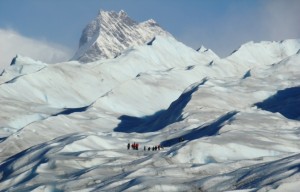
HEADING NORTH
Our next stop was in the Litoral region and the province of Misiones to see the spectacular Iguazú Falls – the widest falls in the world bordering Argentina, Brazil and Paraguay.Our flight witha stop at Bariloche, reached Buenos Aires around midnight.After an overnight stay at Buenos Aires, we flew to Iguazú Falls.
As we headed up north more towards a sub-tropical climate, the temperature in winter changed dramatically from 5°C in El Calafate to about 10°C in Buenos Aires and eventually to 28°C in Iguazú Falls. The falls are 22 kilometres from the city centre and is in the direction of Paraguay and Brazil, barely 6 kilometres or an hour’s drive to Brazil. After arrival in Iguazú, we headed to the IguazúForest.This region offers a combination of rivers and forest. The plains and forests are surrounded by heavy flow rivers of which the Parana and Iguazúriverare of great significance as they play an important part in the formation of the magnanimous Iguazú Falls. The Parana river divides Argentina and Paraguay.
ACTION BEFORE THE FALLS
En route to the forest we stopped on the way to see the Guarani Tribe – Guaranis are a group of culturally indigenous people of South America and they speak the Guarani language. They are spread across 4 countries- Brazil, Argentina, Uruguay and Bolivia of which over 1000 Guaranis are in Argentina.
We did a 4 hour excursion comprising of 3 adventure activities – Canopy, Rappelling and Hiking. The last of the activities was the most exhilarating – the Canopy. After climbing a treetop through a stairway, we slided from one tree to another fastened by a harness which was attached to a steel cable enjoying the views of the forest from a height and zipped passed a distance of over a kilometer in no time.
We thoroughly enjoyed the experience and if one has more time in hand, one could easily add an ATV ride experience to the four hour excursion comprising of 3 adventure activities.
Later in the evening we visited Aqva – a restaurant which specializes in sea food and when in Iguazú it is recommended to try the Suruvy fish which is a local river fish.
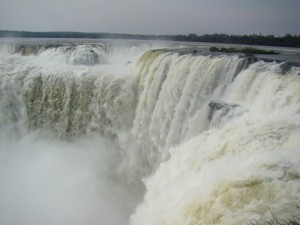
THE ROAR OF IGUAZÚ
Next morning we headed to the Iguazú National Park where we spent the entire day to see what are undoubtedly the most spectacular falls in the world bordering 3 countries.
Known as the AguasGerantes or Big Water by the Guaranis, the Iguazú Falls haveover 275 falls and the border between Argentina and Brazil is marked by the most spectacular of them all – the Garganta del Diablo or the Devil’s Throat. The water from the falls plunges to 70 metres in the abyss below and the park besides the falls is also home to over 2000 species of plants and 400 species of birds as well.
Iguazú Falls, which is one of the natural wonders of the world, has 2100 metres of the falls on the Argentinian side and 600 metres on the Brazilian side. The Brazilian side is known as Foz de Iguazú whereas the Argentinian sideis known as the Puerto Iguazú.
Paraguay, the Ciudad de l’Este which is located on the other side of the Parana River from Argentina has 200000 inhabitants, a majority of them from the Guarani Tribe.
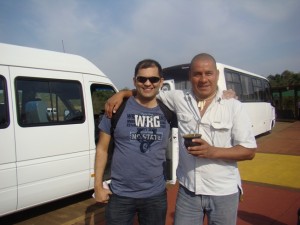
NAVIGATING THE DEVIL’S THROAT
The amazing part of the falls is that it changes every day as the rainfall in the area determines the falls. It was AlvarNuñezCabeza de Vaca from Spain who discovered the falls for the first time in 1542 and initially called it Santa Maria. Later in 1934, it was named the Iguazú National Park – one of the 32 National Parks in Argentina.It takes a couple of hours to see the 270 odd cataracts from various panoramic views and you have to spend almost the entire day to see the falls.
En route we also saw coaties which are a type of raccoon and seem to be pretty friendly animals though it is best advised not to get very close to them.
Another activity which is worth doing is a boat trip on the gentle Iguazú river where you can view the falls and go in close proximity with the risk of getting fully drenched inspite of having a raincoat on. The boat trip in a large rubber-raft is worth it provided you carry a change of clothes or else you will come out soaking wet at the end of the trip.
If you do have a Brazilian visa you can view the falls from the Brazilian side or else you can explore other exciting cities of Argentina.
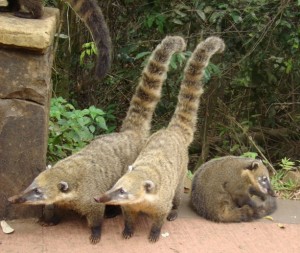
SAY NAMASTE TO ARGENTINA
Argentina is truly a country of six continents and in my short trip of 7 days I got a glimpse of three unique experiences from the glaciers to the vibrant capital city and eventually the most majestic falls – truly the eighth wonder of the world. I carried back pleasant memories of the land of Tango, Football, Wine, Adventure, Glaciers,Falls and much more. From the Andes Mountains and Cuyo in the north to Patagonia in the south, Argentina truly attracts the discerning traveller.
So pack your bags and get ready to say Namaste Argentina and explore a land full of varied experiences in one unique destination

